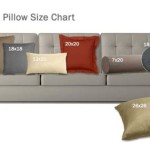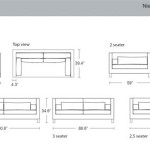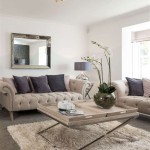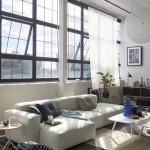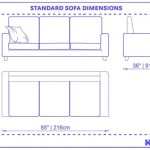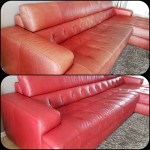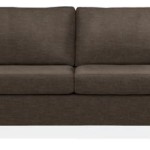Sofa Couch Design: A Comprehensive Overview
The sofa couch, a foundational piece of furniture in many living spaces, serves as both a functional seating solution and a visual anchor within a room. Understanding the complexities of sofa couch design involves considering various factors, including style, material, construction, and intended use. A well-chosen sofa enhances the aesthetic appeal of a room while providing comfort and durability for years to come. This article provides a detailed exploration of sofa couch design, highlighting key considerations for consumers and interior designers alike.
Understanding Sofa Styles: A Foundation for Design
The aesthetic impact of a sofa is largely determined by its style. Several distinct styles cater to varying tastes and interior design themes. Recognizing these styles is crucial for selecting a sofa that complements the existing decor.
The classic Chesterfield sofa, characterized by its rolled arms and deep button tufting, exudes a sense of timeless elegance. Often upholstered in leather, Chesterfield sofas are typically associated with traditional or formal living spaces. The low back and comfortable seating make it a comfortable and visually striking choice.
Conversely, a mid-century modern sofa typically features clean lines, tapered legs, and a minimalist silhouette. These sofas often incorporate natural materials such as wood and are upholstered in fabrics with geometric patterns or solid colors. The emphasis is on functionality and understated elegance, fitting well with minimalist or contemporary design schemes.
Sectional sofas offer versatility and modularity, making them ideal for larger living rooms or family rooms. These sofas consist of multiple sections that can be arranged in various configurations, such as L-shapes or U-shapes. Sectional sofas provide ample seating and can often include features such as reclining seats, storage compartments, or built-in cup holders.
Lawson sofas are known for their clean, simple design and comfortable cushions. They typically feature a straight back and low, rolled arms, making them a versatile choice for various interior styles. Lawson sofas are often upholstered in durable fabrics and are considered a practical and comfortable option for everyday use.
Bridgewater sofas are similar to Lawson sofas, but they have a slightly more rounded shape and a skirt that covers the legs. This design detail gives Bridgewater sofas a softer, more casual appearance. They are often upholstered in patterned fabrics and are suitable for traditional or cottage-style interiors.
Camelback sofas are distinguished by their arched back, which rises to a higher point in the center. This distinctive feature adds a touch of formality and sophistication to the sofa. Camelback sofas are often upholstered in luxurious fabrics such as velvet or silk and are suitable for formal living rooms or drawing rooms.
Material Selection: Durability and Aesthetic Considerations
The choice of materials significantly influences the durability, comfort, and overall aesthetic of a sofa. Both the frame and upholstery require careful consideration to ensure longevity and suitability for the intended use.
For the frame, hardwoods such as oak, maple, and birch are preferred due to their strength and resistance to warping. Kiln-dried wood is essential to prevent cracking and shrinkage over time. Softwoods like pine are less expensive but may not be as durable, especially in high-traffic areas. The frame's construction, including the joinery techniques, should be assessed to ensure stability and structural integrity.
Upholstery fabrics vary widely in terms of appearance, texture, and performance. Leather is a popular choice for its durability, luxurious feel, and resistance to stains. Full-grain leather is the highest quality, followed by top-grain and bonded leather. However, leather can be more expensive and may require special cleaning and conditioning.
Cotton is a natural fiber that is soft, breathable, and relatively inexpensive. However, cotton is prone to staining and fading, making it less suitable for high-traffic areas or homes with children and pets. Blends of cotton and synthetic fibers offer improved durability and stain resistance.
Linen is another natural fiber that is known for its elegant appearance and breathability. However, linen wrinkles easily and can be difficult to clean. Linen blends offer improved wrinkle resistance and durability.
Synthetic fabrics such as polyester and microfiber are durable, stain-resistant, and easy to clean. They are a practical choice for families with children and pets. Microfiber is particularly soft and comfortable, while polyester offers excellent resistance to fading and abrasion.
Velvet is a luxurious fabric with a soft, plush pile. It is often made from cotton, silk, or synthetic fibers. Velvet adds a touch of elegance and sophistication to a sofa, but it can be prone to crushing and staining. Special care is required to maintain its appearance.
In addition to the upholstery fabric, the cushion fill also affects the comfort and longevity of the sofa. Down and feather fills are soft and luxurious, but they require regular fluffing and may not be suitable for individuals with allergies. Foam fills offer good support and are more resistant to allergens. High-density foam is more durable than low-density foam, providing better support and resisting sagging over time. A combination of foam and fiber fill offers a balance of comfort and durability.
Construction and Ergonomics: Ensuring Comfort and Support
The internal construction of a sofa is crucial for ensuring long-term comfort and support. The frame, suspension system, and cushioning all contribute to the overall seating experience.
The frame provides the structural foundation of the sofa. As mentioned previously, hardwoods are preferred for their strength and durability. The frame should be securely joined using techniques such as mortise and tenon, dovetail, or dowel joints. Metal corner blocks and screws can also be used to reinforce the frame.
The suspension system provides support and cushioning for the seats and back. Traditional coil springs are durable and offer good support, but they can be more expensive. Sinuous springs, also known as no-sag springs, are made of curved metal wires that are connected to the frame. They are a more affordable option and provide good support for most users.
Webbing is another type of suspension system that consists of woven straps stretched across the frame. Webbing is less expensive than springs and can provide a comfortable seating experience, but it may not be as durable over time.
The depth and height of the seat are important ergonomic considerations. A seat depth of 20 to 24 inches is generally considered comfortable for most adults. The seat height should allow the user to sit with their feet flat on the floor and their knees bent at a 90-degree angle. The back height should provide adequate support for the lower back and shoulders. The angle of the backrest also affects comfort; a slight recline can be more comfortable for extended periods of sitting.
Armrests play a significant role in comfort as well. Armrests that are too high or too low can cause discomfort in the shoulders and neck. The width and shape of the armrests should also be considered. Narrow, rolled arms may be more decorative, while wider, flat arms provide a more comfortable surface for resting arms or placing items such as drinks or books.
The quality of the stitching and upholstery also contributes to the overall durability and appearance of the sofa. Tight, even stitching indicates a well-made sofa. Seams should be reinforced to prevent tearing or fraying. The fabric should be properly aligned and free of wrinkles or puckers. Details such as button tufting, piping, and nailhead trim can add visual interest and enhance the overall design.
In summary, sofa couch design is a complex field that requires a thorough understanding of styles, materials, and construction techniques. By carefully considering these factors, consumers and designers can select sofas that provide both comfort and aesthetic appeal, enhancing the functionality and beauty of any living space.

Bella Curva Sofa Couch Japanese Designer Living Room Furniture Bedandbasics

Bellini Sectional L Shape Corner Seat Sofa Home Atelier

Discover Five Of The Best Modular Sofa Furniture Designs For Flexible Living Danish Design

3 Seater Sofas Buy Quality Sofa Set Comfort Furniture

Bella Curva Sofa 2 Seater Couch Japanese Designer Living Room Furniture Bedandbasics

Guide To Modern Sofas In The Living Room L Shaped

Euro Sofa Singapore The Best Italian Design

Euro Sofa Singapore The Best Italian Design

Bella Curva Sofa 2 Seater Couch Armchair Japanese Designer Living Room Furniture Bedandbasics

Where To Buy A Sofa In Singapore Easy Lounge Furniture Ping

